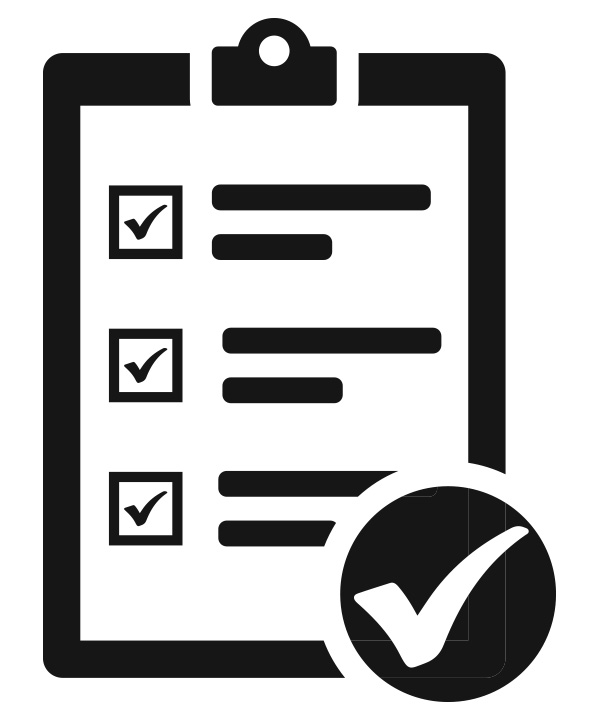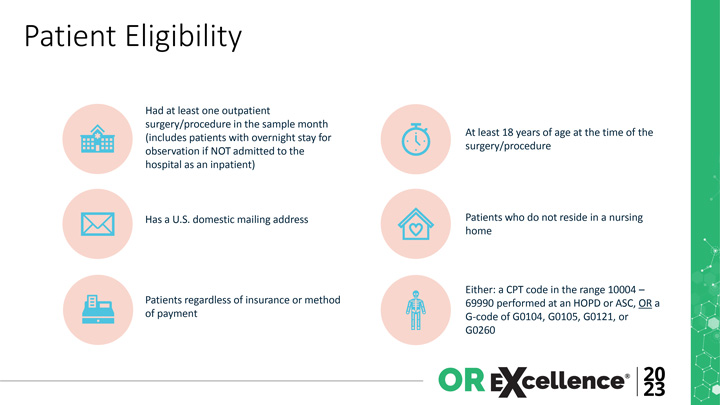Six Surface Disinfection Concepts
The puzzle of superior surface disinfection is never solved....
This website uses cookies. to enhance your browsing experience, serve personalized ads or content, and analyze our traffic. By clicking “Accept & Close”, you consent to our use of cookies. Read our Privacy Policy to learn more.
By: Brooke Blackwell, MBAHM, BSN, RN, and Jennifer Cantrell
Published: 3/4/2024
Many surgical facility leaders view the Consumer Assessment of Healthcare Providers and Systems Outpatient and Ambulatory Surgery Survey — better known as OAS CAHPS — as just another burdensome task on their never-ending to-do lists.
Starting on January 1, 2025, CMS will mandate participation in the OAS CAHPS survey for all Medicare-certified ASCs, and centers that choose not to participate will forfeit the Annual Payment Update (APU), that will impact billing for future CMS payments. The 34-question survey itself is broken down into three sections: Composite Measures (About Facilities and Staff, Communications about Your Procedures and Preparations for Discharge and Recovery); Global Items (Overall Rating of Facility, Willingness to Recommend ASC); and “About You” Items.
While we certainly understand why overworked, understaffed ASC leaders could view the rapidly approaching OAS CAHPS deadline as a hassle, we encourage everyone to look at this undertaking through a different lens. Instead of seeing the survey as a time-consuming burden, try viewing it as a golden opportunity to validate what you do well, as well as a chance to address and correct problem areas.
Far too often, patients feel as though they don’t have a voice or like they don’t have a real say in the care they receive. A tool like this not only gives them a voice to provide detailed feedback, but it also gives facility leaders insight into the issues — positive, negative or mixed — that we never would have known about if patients hadn’t filled out the survey.
For instance, we’ve heard from a patient who had a negative experience with a staff member that could have potentially created significant issues for that patient, for the center and for that staff member. We only found out about the potential issue because the patient came forward with the information in the survey.
We received another comment from a Spanish-speaking patient who found someone to help her translate the survey so she could respond. This alerted us that we needed to provide more training to our registration team to ensure that registrars capture the patient’s preferred language. This allows patients to receive the survey in their native tongue, which ensures that we are receiving valuable feedback from that community. These comments are invaluable when it comes to doing internal investigations and creating resolutions to ongoing or potential problems. The OAS CAHPS survey allows patients to leave their name and contact information — something we always encourage — which makes it easy to follow up with people well after their surgery.
There are many other benefits as well. We often receive comments specific to the physician practice, as opposed to the center where the surgery took place. There are a few questions in the survey about information patients were given before their procedure — information that generally comes directly from the physician’s practice. Patients will respond with complaints like “I didn’t get results” or “Trying to schedule was a real challenge.” While these comments may not be specific to the center itself, we do have a responsibility to those frustrated or unhappy patients. The survey information allows us to have a conversation with the physicians and loop them into what patients are saying about their practice and how it’s impacting the overall surgical experience. Again, we see this as an opportunity to build even stronger relationships with physician practices and improve the overall patient experience.
Another silver lining of this massive quality initiative is the treasure trove of information leaders will gain. In addition to all the invaluable data and comments ASCs receive from their patients, centers can benchmark themselves against facilities just like theirs. CMS doesn’t break out the data like this, but if you’re working with an OAS CAHPS vendor with a large enough database, you can do a true apples-to-apples comparison of your center to other freestanding ambulatory surgery centers.

While the OAS CAHPS survey may feel like a complex and time-consuming endeavor (which it is), the implementation process can be broken down into the following six steps:
• Register for a login at oascahps.org.
• Complete your facility CCN registration.
• Contract with one of 16 CMS-approved vendors.
• Authorize your contracted vendor to collect and submit survey data.
• Compile and deliver survey vendor list of patients.
• Vendor will submit survey data to OAS CAHPS data center before the Jan. 1, 2025, deadline.
—Brooke Blackwell, MBAHM, BSN, RN, and Jennifer Cantrell
Bookmarking oascahps.org is a must. The website offers a simple checklist [See Checklist on left] that walks facility leaders through every step of the OAS CAHPS process from start to finish, an essential resource whether you’re just starting out or simply looking to review where you are and what’s next. Eligible centers are required to authorize — via an online authorization form from a customized dashboard that’s created after registering — from a list of 16 CMS-approved survey vendors (osmag.net/vendors), seven of which have had their Quality Assurance Plan accepted by CMS (the plans of the other nine are under review).
Hopefully, you’ve already vetted and chosen your vendor. If you’re still deciding on one, expedite the process as much as you possibly can. The bulk of the survey process itself — including uploading the quarterly reportable data to CMS — is the responsibility of the vendor. But choosing the right vendor and determining patient eligibility is crucial, and the selection-to-partnership process isn’t like flipping a switch. Ideally, the process should involve requesting proposals from multiple vendors to determine the best price and service fit for your center’s (or centers’) needs. Obviously, cost always plays a pivotal role in the decision-making process, but you also want to dig in and find out what a potential vendor has to offer. For instance, how large is the vendor’s database for benchmarking purposes? Does it have thousands of facilities using the OAS CAHPS survey or does it have a couple hundred? What type of real-time data can the vendor provide me whenever I need it?

After the selection, your center’s IT and billing departments will need to work closely with the vendor to ensure the correct data is being uploaded to them. Build in proper time for troubleshooting, as sorting through data issues with your vendor will take time and energy to work through. Of course, this will vary depending on the size of the facility. For a single ASC, the data flow and troubleshooting won’t be as challenging as it will for a system with multiple centers. If you fall into the latter category, understand that a lot is going on behind the scenes on the vendor side, and it takes time to get those data flows entered in a way that meets the very specific CMS criteria. Don’t go in thinking once you’ve chosen a vendor, you’re going to get that contract signed the very next day. It may take months to get through the procurement process. The biggest challenge we’ve faced at AMSURG is making sure all our centers are uploading the CMS-required patient information to our vendor. Ensuring all the software is up to date and meets the minimum specifications has been a huge challenge, and this is far from new for us. We’ve been using the voluntary OAS CAHPS survey since 2016, and it still takes a great deal of time and effort to stay up to date on all the requirements.
The bottom line is OAS CAHPS is no longer an optional task. If you’re required to do this, why not make the most of it — and take full advantage of the many opportunities it presents?
At a conference several years ago, the keynote speaker urged attendees to look at data differently. “These surveys are more than a number, more than a percentage and more than a score,” said the speaker. “These are patients; they are people; and these are their stories.” Whenever you’re feeling frustrated with the added demands of OAS CAHPS and you’re just trying to get patients in and out of your busy center, try to step back and remember that, in the words of a former VP of ours, “We are taking care of someone’s everything.” This survey will ultimately help us to improve how we provide that superior care. OSM
The puzzle of superior surface disinfection is never solved....
Boston Children’s Hospital is renowned for its exemplary care on many fronts, including surgery....
Manual cleaning done properly is effective for eradicating microorganisms....